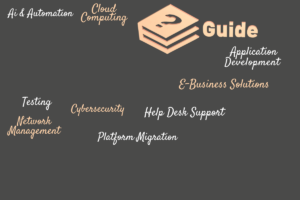When it comes to setting budgets, cost-effective IT is typically a high priority for management – why pay more for something if you don’t need to?
Here’s how to manage the budget, while still ensuring IT remains efficient and effective for your business.
Managing your IT budget means not paying more for something you don’t need to. Here are the five ways you can manage your IT budget:
- Plan for the unexpected
- Don’t forget about innovation
- Align your business strategy with IT
- Include other departments
- Consider outsourcing
5 Ways to Manage Your IT Budget
Planning for the unexpected
When it comes to managing an IT budget, it is important to set aside a percentage for the unexpected. It is not uncommon for every business to encounter something unforeseen when it comes to their technology, no matter how prepared they are.
It can, and does happen, and has a tendency to cause stress within management when there needs to be an over-budget spend. So minimise this issue by always having a safety net of allocation.
Maintenance vs innovation
IT spend is no longer just about maintaining technology in your business – the most successful companies these days are the ones who leverage IT to be innovative and forward-thinking.
When it comes to setting your budget, plan for continuing with regular maintenance to ensure daily tasks are able to be carried out. But also allocate spend for technology that can assist you with growing your business – because this is one of the best investments you can make. It’s certainly not something you want to miss out on just because you didn’t ‘budget for it’. And if you go one step further, by working out the expected ROI on the investment, you’ll no doubt see why innovation is an essential part of your IT spend.
Read more: How to: Use IT to increase business profitability
Aligning business strategy and IT spend
Business strategies and the IT budget should always go hand-in-hand. These days, where almost every business function has an element of technology intrinsically linked to it, there is no setting of one aspect without the other.
If your business plans to expand by 50 per cent over the next three years – what affect will this have on IT? What new software or hardware will be required to support the growth, and what implications will that have on the budget? If you can plan these aspects before they arise, then there is less of an issue when it comes to actioning those items, and having to spend more than what was allocated.
Ensure every department is covered
When it comes to setting an IT budget, you need to make sure all departments of the business are able to provide input into where they may require spend. The marketing department may need a new CRM system to roll out their next stage of development, or finance may be looking to purchase new software system for the accounts – and of course, these require a portion of the IT budget.
Rather than thinking about IT as its own separate entity, consider how it impacts on the plans of all other functions of the business.
Could outsourcing be budget-friendly?
One of the best things you can do for your IT budget is work out if outsourcing a part of it (or even all of it) is going result in cost-effectiveness.
There is no point in assuming outsourcing will cost more unless you have actually done your research with a range of providers to understand what is available – you might be quite surprised!

Keen on further knowledge on how to manage IT in your business? Download: An essential guide to IT for SME business – Risk, Security and Productivity


